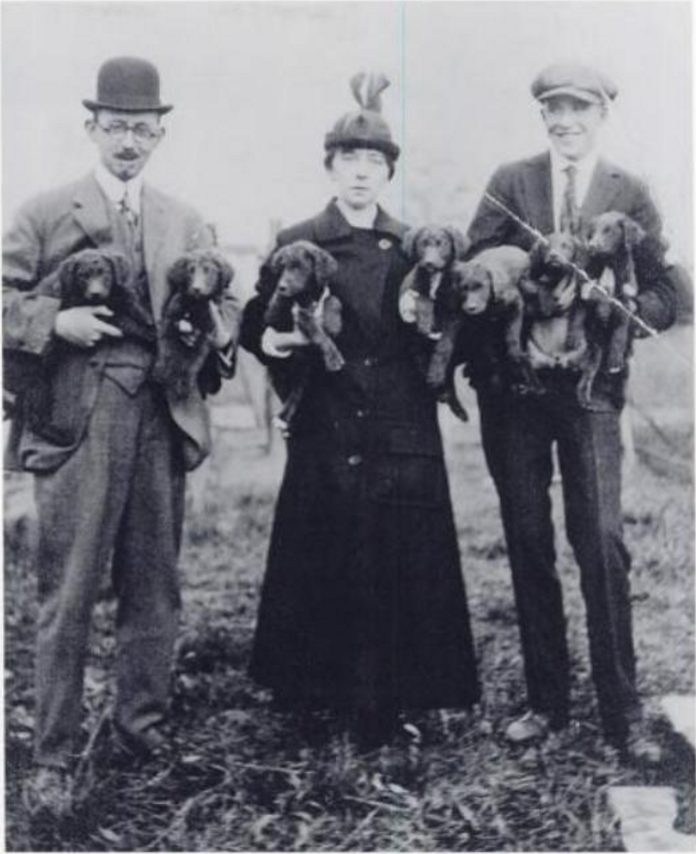
It’s possible that the first real description of a working retriever doing his job also contained the first written mention of a retriever taking a hand signal:
This breed of dogs are very swift and powerful swimmers, they will chase a crippled duck one or two miles, and unless the duck is very slightly hit, will catch him in the end. The dog sits on the shore hehind a blind, his color matching to well with the sand and clay that were he even continually moving the ducks would never notice him (this is the reason the brown color is so carefully bred for). He seldom moves any part of his body except his head which he continually turns up and down the river, often sighting the approaching ducks before the gunner. When the gun is fired and a duck falls, he bounds to the edge of the water, plunges in and brings it ashore, and than without having received a word of command from his master, carries it up to the place where he sits and drops it….If the duck falls too far out for the dog to see, he takes his direction from the motion of the hand…
The account was described by O.D. Foulks of Chesapeake City, Maryland, a contributor to The American Sportsman, and quoted by Arnold Burges in The American Kennel and Sporting Field of 1882. Foulks referred to this breed as “the Brown Winchester” or “Red Chester,” but most believe he was describing the Chesapeake Bay Retriever.
Image found on Pinterest of Chesapeake Bay Retriever puppies circa 19th century found on Pinterest and happily credited upon receipt of information
